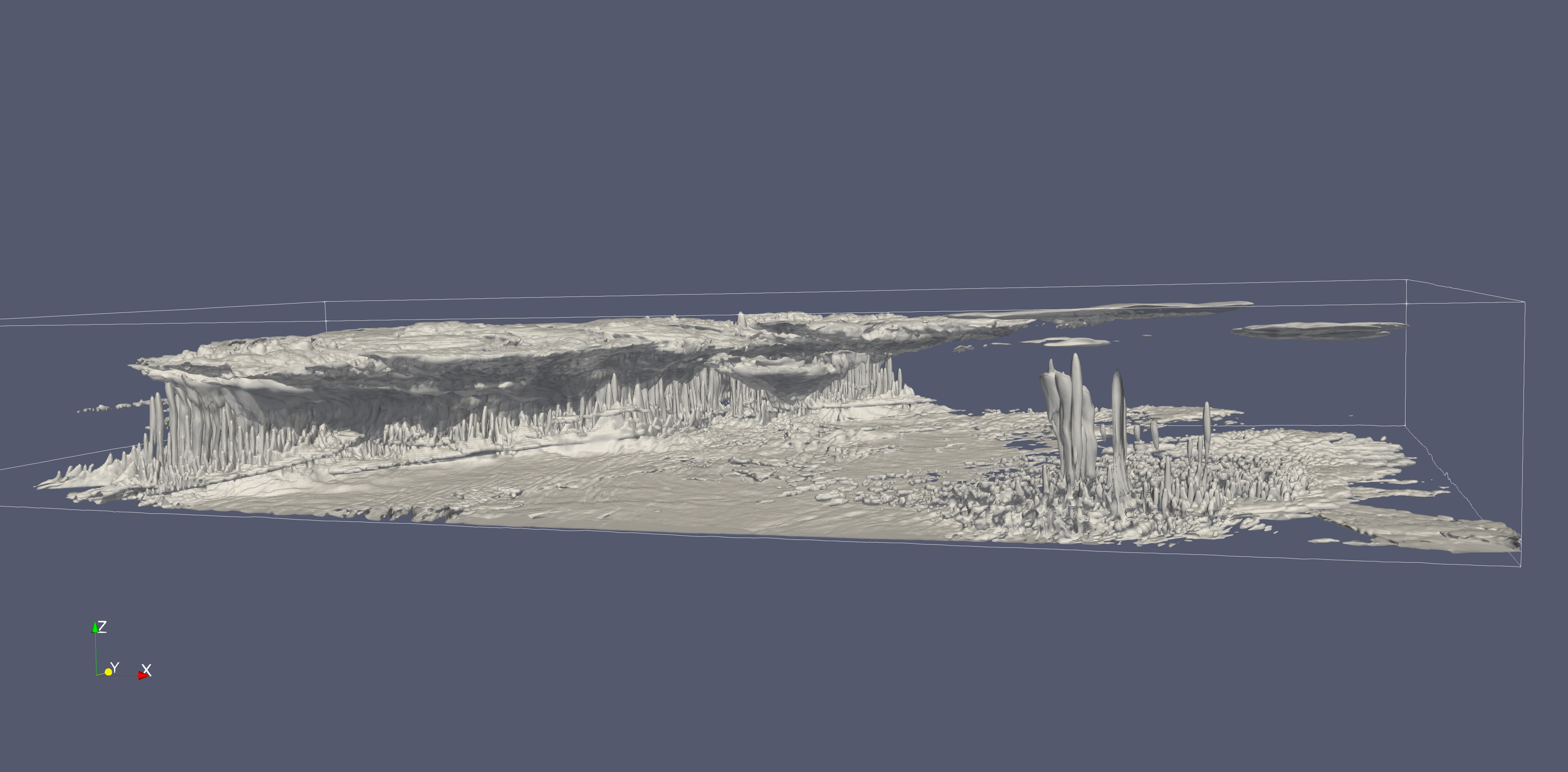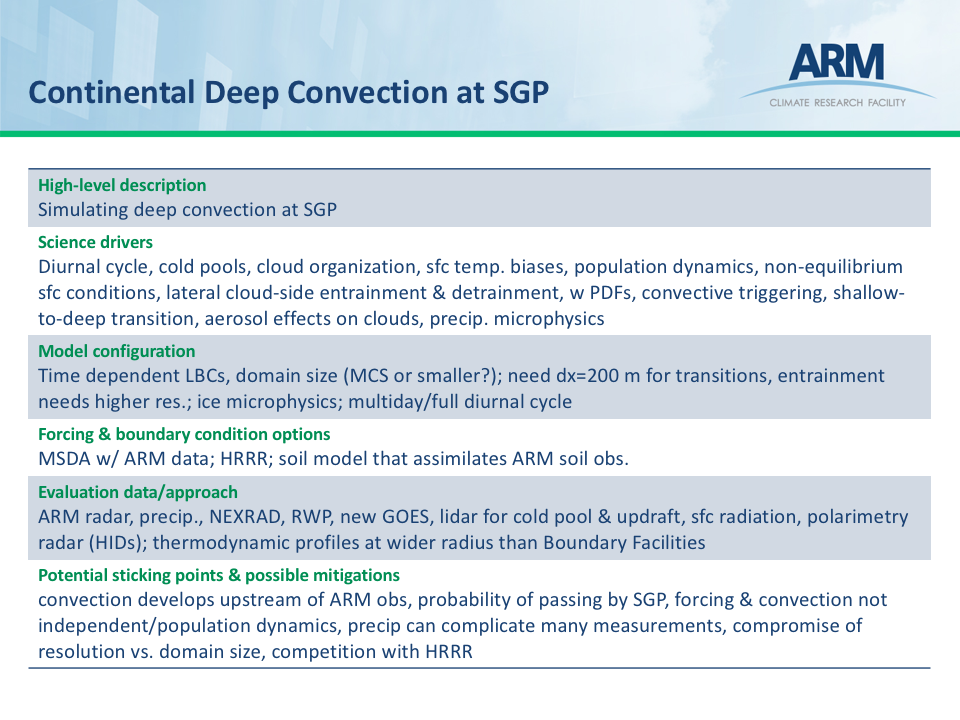Share Your Ideas on Growing LASSO Part 4: Continental Deep Convection
Published: 21 November 2018
Editor’s note: William Gustafson, principal investigator for the Large-Eddy Simulation (LES) ARM Symbiotic Simulation and Observation (LASSO) workflow, sent in this update.

I get asked one question over and over again, ever since beginning the LASSO project. “When is LASSO going to do deep convection?” Sometimes the person asking is just playing with me to see my response, knowing how difficult it is to do large-eddy simulations of deep convection. Other times, I believe the questioners are sincere about attempting this daunting task.
Oklahoma has some great thunderstorms, and the Atmospheric Radiation Measurement (ARM) user facility possesses many state-of-the-art radars and other instruments at its Southern Great Plains atmospheric observatory for sampling these majestic storms. As a modeler, I too would be excited to get routine simulations of deep convection to use for process studies and improving convective parameterizations.
If ARM were to attempt routine deep convection simulations, the big questions come down to what is considered the minimally acceptable model configuration and could ARM afford it routinely.
As an example, the mesoscale convective system simulation used to render the figure in this blog post required months to complete using a combination of the U.S. Department of Energy’s Mira and Edison supercomputers. The area shown is roughly the size of Oklahoma, and the model grid spacing is 400 meters. Model output for the inner domain is roughly 2.7 terabytes per simulated hour, with output every minute. Achieving this required compromises in the resolution, which was initially desired to have 200-meter grid spacing, as well as domain size, which reduced the residence time of the system within the model domain.
To achieve an affordable routine simulation of deep convection would require much stricter design choices. Is 1- or 2-kilometer grid spacing useful for the research community? Would this add enough value to justify the cost versus using the National Oceanographic and Atmospheric Administration’s High-Resolution Rapid Refresh simulations with 3-kilometer grid spacing?

What types of deep convection should be simulated? Mesoscale convective systems (MCSs) are often cited as something models need to simulate more accurately to rectify errors in diurnal cycles of precipitation. But MCSs are large by definition, thus requiring many resources to simulate, and MCSs spend much of their lifetime too far from ARM facilities to measure observationally. Locally driven deep convection may be a better option, since a smaller domain could be used. Of course, one still needs to identify the optimal observational framework to associate with the simulations, which would be driven by the science questions of interest to the community.
Join the Discussion
How would you configure routine simulations of deep convection for ARM? How would you prioritize these simulations in relation to other LASSO expansion scenarios, such as those discussed in previous posts in this series? What observations would you want included in the data bundle? What new observations would ARM need to add to complement and/or evaluate the LES?
Also, what science questions would you like the simulations to support? The slide in this blog post includes the topics we have so far.
We invite you to participate in the forum discussion on GitHub, where we have added an entry on the deep convection expansion option. Help ARM prioritize its options and make decisions that will benefit your research.
Community input is critical for motivating the next phase!
Keep up with the Atmospheric Observer
Updates on ARM news, events, and opportunities delivered to your inbox
ARM User Profile
ARM welcomes users from all institutions and nations. A free ARM user account is needed to access ARM data.


















